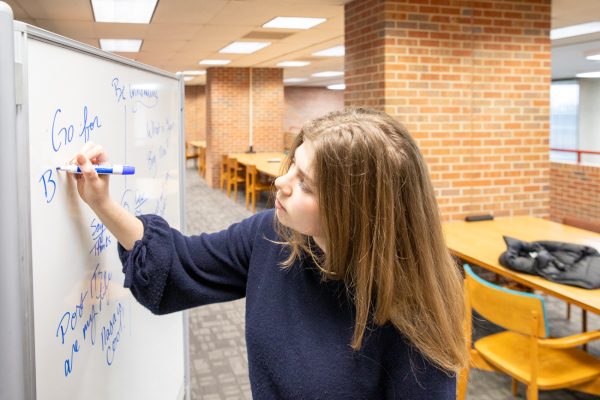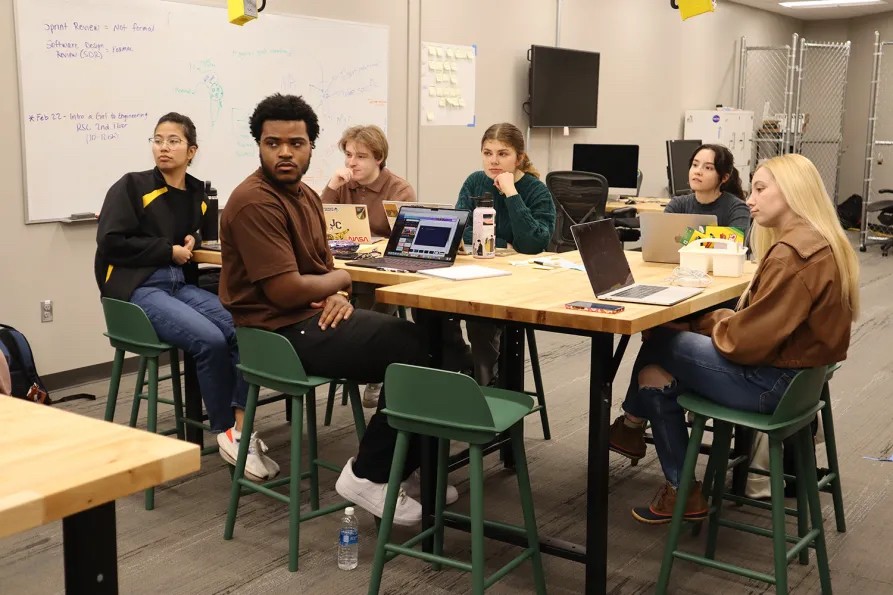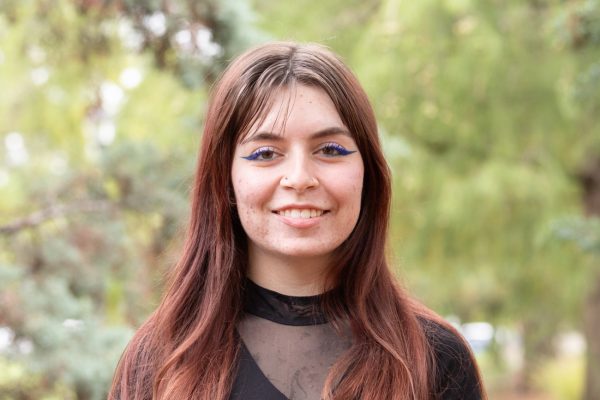A team from Wichita State submitted a design proposal that was selected by NASA to be further developed in the NASA Spacesuit User Interface Technologies for Students (SUITS) competition.
NASA ultimately plans on colonizing Mars after collecting research from its upcoming Artemis missions to the moon. The goal for the NASA SUITS competition is to design user interfaces, which serve as the point of contact between humans and computers, as well as space suit features to help navigation on Mars and communication with the Local Mission Control Console (LMCC).
The Wichita State team, CosmoShox, is highly collaborative. It features graphic designers, game designers, mechanical engineers, aerospace engineers and other backgrounds.
CosmoShox co-leader Denae Berry described the development team as a “horizontal hierarchy” where no role is above another; developers may have different areas of expertise, which they can share to create well-informed ideas.
CosmoShox developer Elliott Chambon said the competition used to be about the moon. NASA’s paradigm shift to researching Mars poses many additional challenges for the team to tackle.
“You’re so far away from Earth that there’s no mission control contact or anything, so they’re trying to have a local mission control on the base that would communicate to the astronaut outside,” Chambon said.
Berry said that the brainstorming process was very long.
“We wanted to make sure that we were addressing every single detail because, obviously, this is space, and if something goes wrong, you quite literally do die,” Berry said.
The students need to be able to design an interface that can pick up rocks for samples, keep track of which oxygen tank is being used and effectively communicate with LMCC.
Berry highlighted that using the design thinking model requires one to work backward from the solution.
“Don’t think about the solution,” Berry said. “Just think about the problem — and then from there, you can actually do the proper market research to reinforce if that problem exists and needs to be fulfilled.”

The team uses a design thinking framework: Scrum. The key to their methods is to develop the most basic part of the design so that it is ready to be pushed to the market if needed.
Berry said that although NASA SUITS is a competition, all of the teams share ideas.
“You are challenging yourself to create the best prototype,” Berry said. “You’re not competing against others because as soon as you start competing against another limitation, you’re limiting how good the product can be. Whereas, if you’re collaborating, you’re creating the atmosphere for getting the best product possible.”





